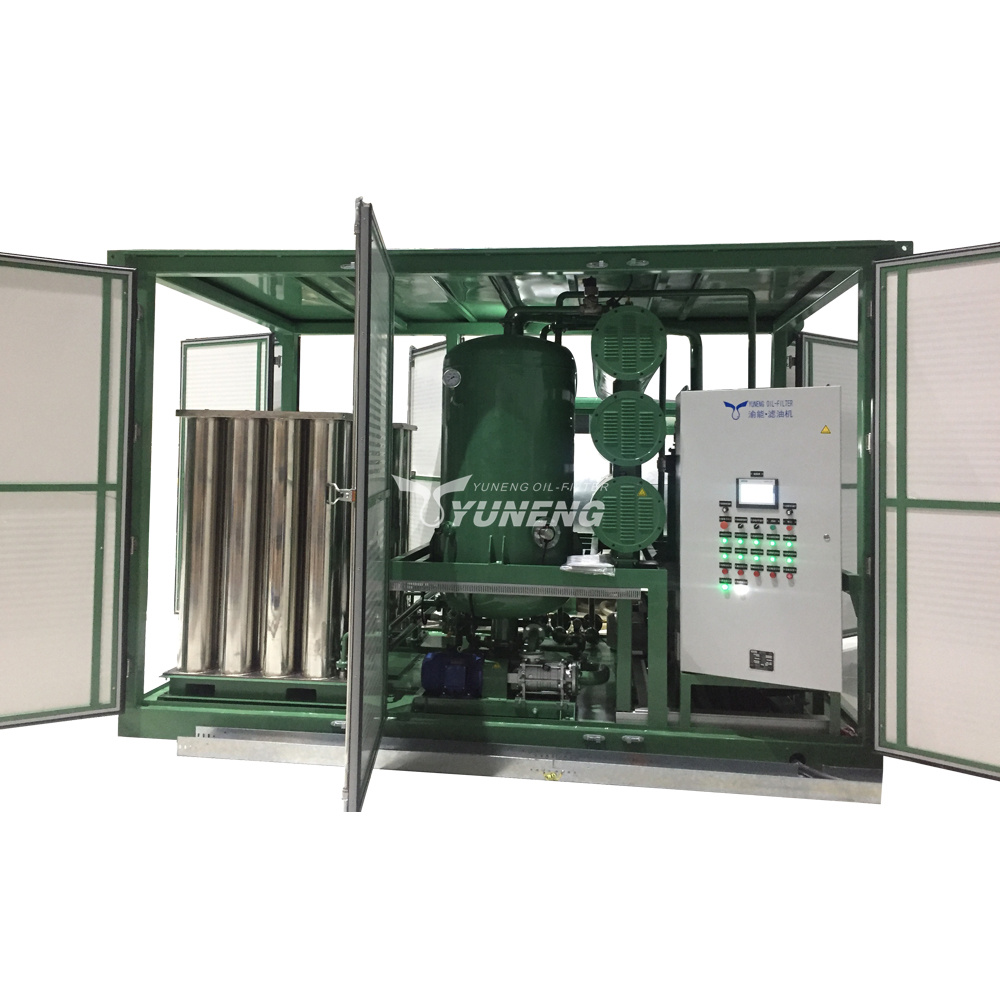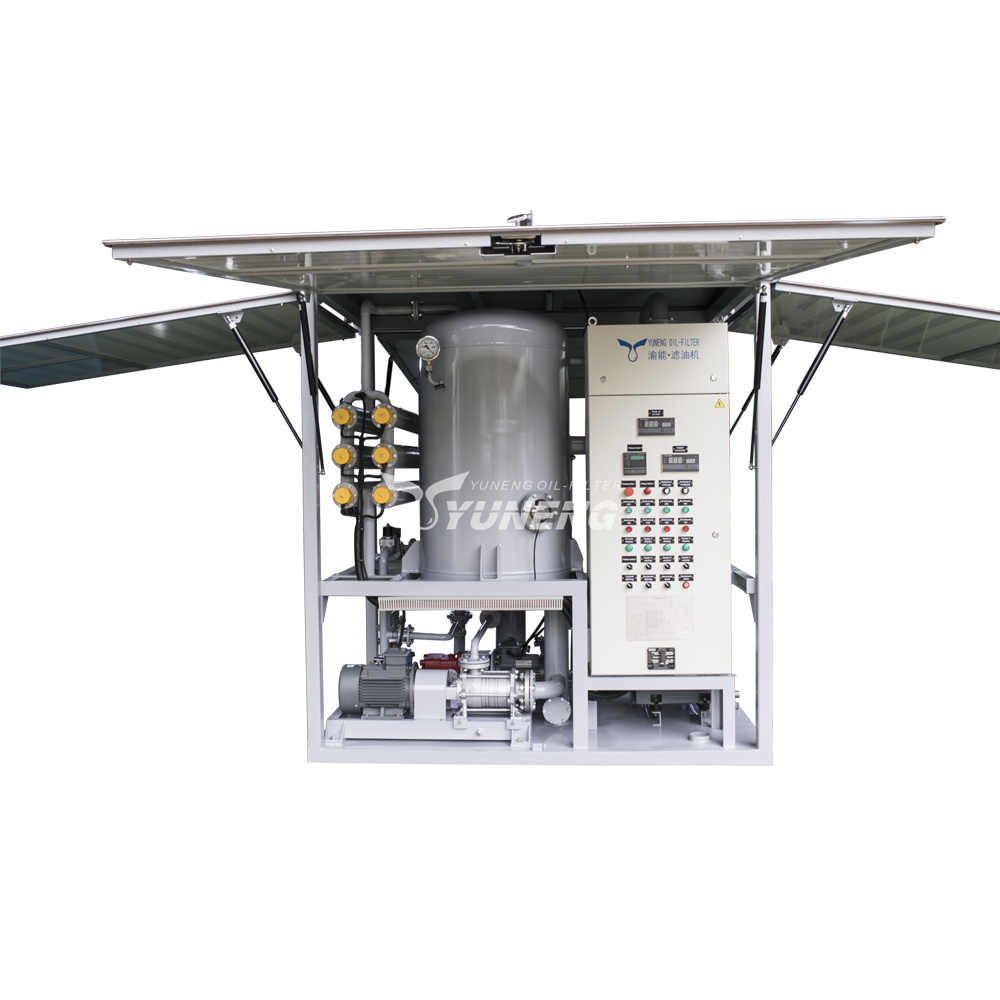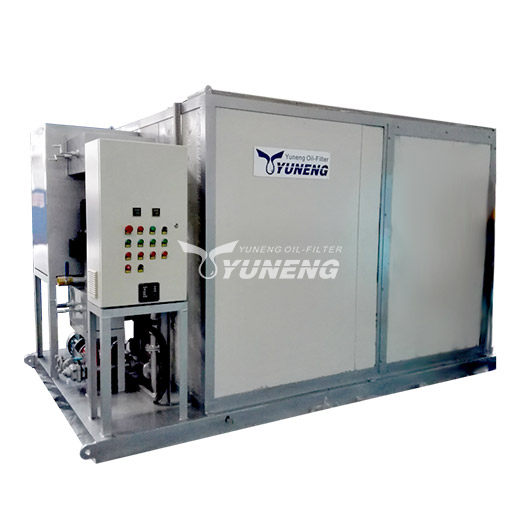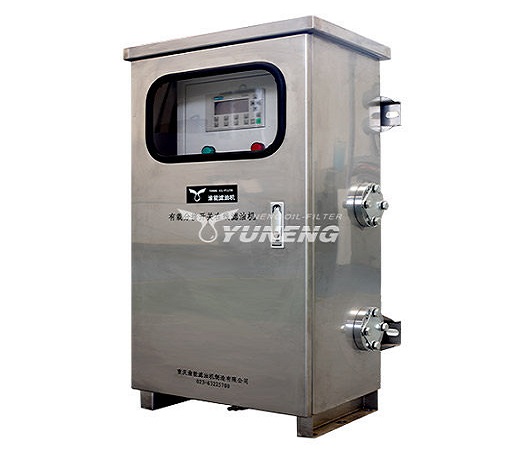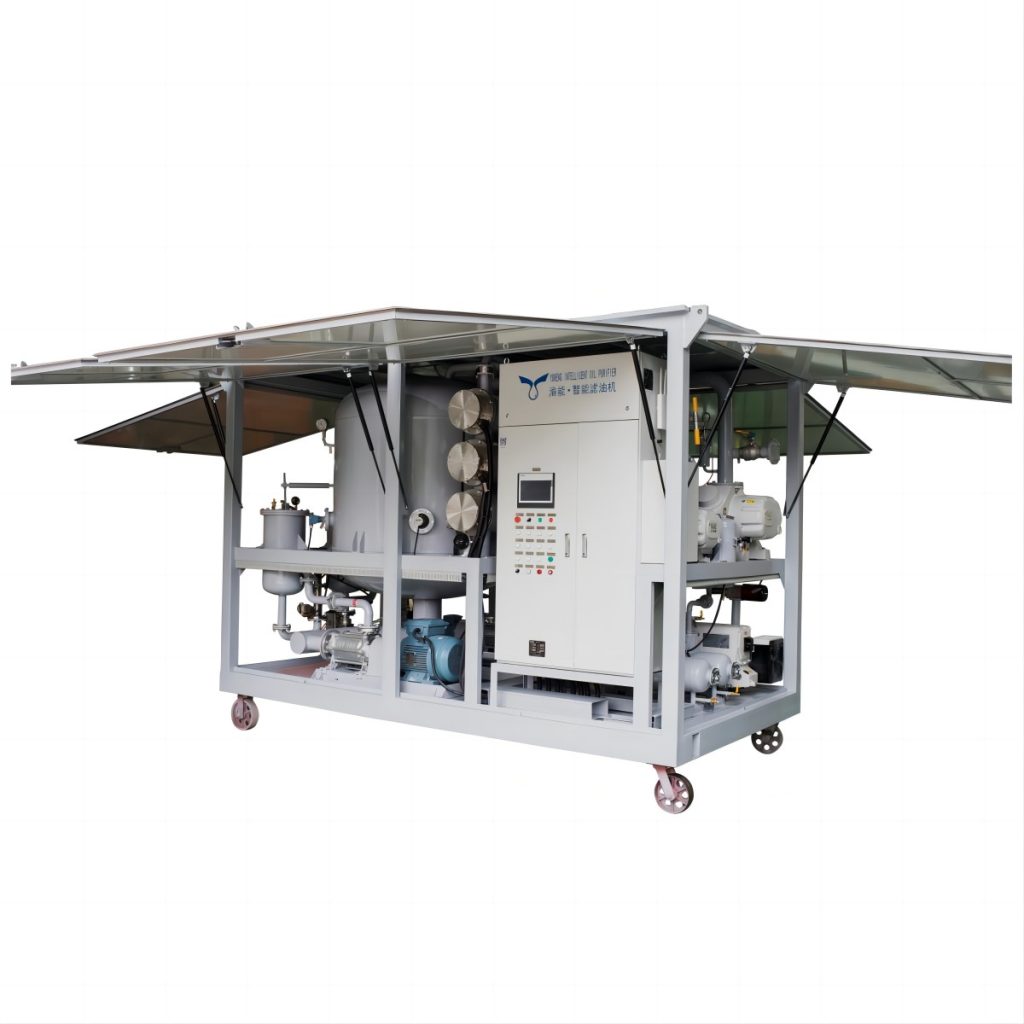What Is Transformer Oil? 8 Must-Know Tips for Optimal Performance
This article will introduce the characteristics of transformer oil, the role of transformer oil, whether different types of transformer oil can be mixed, the reasons for the change of transformer oil level, how to deal with used transformer oil, and the filtration and regeneration of transformer oil.
1. Properties of Transformer Oil
Transformer oil is a fractionation product of petroleum, and the main components are alkanes, naphthenic saturated hydrocarbons, aromatic unsaturated hydrocarbons, and other compounds. It is a pale yellow transparent liquid with a relative density of 0.895. Freezing point <-45 ℃.
Quality index of transformer oil
1. Transparent appearance, no suspended solids, sediments, and mechanical impurities
2. Flashpoint (closed cup) ≥135℃
3. Kinematic viscosity (50℃) ≤9.6×10-6m2/s
4. Acid value ≤0.03mgKOH/g
5. Pour point <-22℃
Density and viscosity of transformer oil
Transformer oil density is the ratio of the mass of the substance to the volume of the substance. Simply put, it is the ratio of the weight of the oil to the volume or amount of the oil.
The density of transformer oil has a great influence on the operation of power transformers. Therefore, when filling the transformer, we need to pay attention to the density of the oil. The specific density of transformer oil will generally vary depending on the manufacturer and the location where the oil is primarily used. Transformer oil temperature also affects the density of transformer oil. As the temperature increases, the density of transformer oil decreases.
Concerning viscosity, it is a measure of the resistance of a fluid to flow. Viscosity is a parameter that affects heat transfer since transformer oil is the primary coolant and heat transfer medium for transformers. Therefore, the calculation of viscosity is always an essential operating parameter when selecting oils for electrical equipment such as transformers.
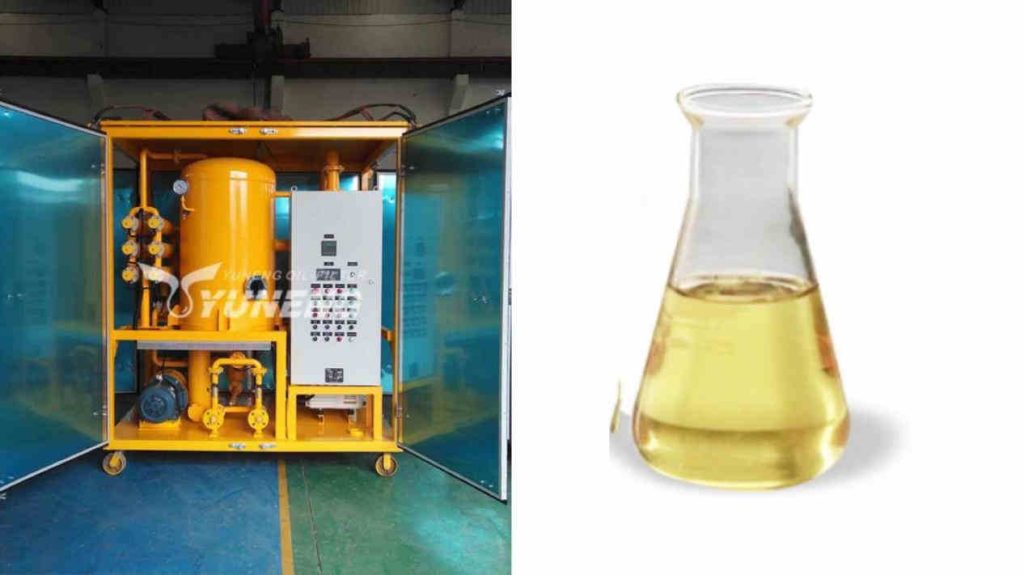
2. Transformer oil filling
Transformer oil filling refers to the oil-immersed transformer and its accessories, which are injected with qualified insulating oil after installation.
If the oil level drops, the windings and core of the transformer can overheat, potentially causing loss of dielectric strength of the general insulation system and transformer failure.
Reasons for transformer oil level drop
Under normal circumstances, the oil level of the transformer varies with the oil temperature.
There are other reasons, such as:
1. The transformer has serious oil leakage during operation.
2. The transformer is not tightly sealed or damaged, and the oil continues to overflow from the damaged place.
3. When changing the transformer’s oil, let the dirty oil outside the oil pillow enter the oil tank.
4. The oil in the oil pillow is easily damp, which makes the oil pillow accumulate water.
5. Replace the silica gel in the adsorption filter.
6. Purification or regeneration of transformer oil.
3. Can different types of oils be mixed?
The manufacturer of the transformer usually provides guidance on this. Some prohibit mixing oils made from different kinds of crude oil. Some allow the mixing of various oils, but only if both types contain or do not contain antioxidant additives. When mixing oils with or without additives, preliminary analytical experiments are required to determine the overall stability of the mixture at a given ratio.
In general, it is not advisable to mix them in principle.
4. The role of transformer oil
1. Heat dissipation: Transformer oil mainly plays the role of heat dissipation and cooling when the transformer is running;
2. Insulation function: It plays the role of insulation and insulation maintenance for windings, etc.;
3. Arc suppression function: Transformer oil plays an arc suppression function at the high-voltage lead wire and the contact point of the tap changer to prevent the generation of corona and arc discharge;
4. Transformer oil is widely used as a liquid seal in hydraulic safety valves.
5. Contaminants present in oil
During the operation of the transformer, with the flow of time, the transformer oil will gradually become contaminated, and moisture will enter and be oxidized. Transformer oil may contain impurities such as dust, sludge, and free water. Among the most prevalent pollutants are water and particulates.
Due to the influence of oxygen, high temperature, and metal salts, the chemical and physical properties of transformer oil are gradually degraded, and the deteriorated transformer oil cannot normally work, which will affect the safety of transformer operation.
6. What to do with used transformer oil?
We need to know that simply replacing the old oil with new oil will not completely solve the problem. Because the economic cost of replacing the new transformer oil all the time is high, and when used oil is drained from the transformer, contaminants are left in the tank, windings, and solid insulation. And these pollutants can accelerate the degradation of new oil.
Moreover, after the waste oil is discharged from the transformer, it must be properly disposed of. For the healthy and sustainable development of the environment and ecology, the old oil cannot simply be poured into the ground or into the water. The waste oil must be properly disposed of, and the cost is very high.
Therefore, you can choose to repair the old transformer oil and prolong the service life of the old oil. Some remediation methods include purification and regeneration.
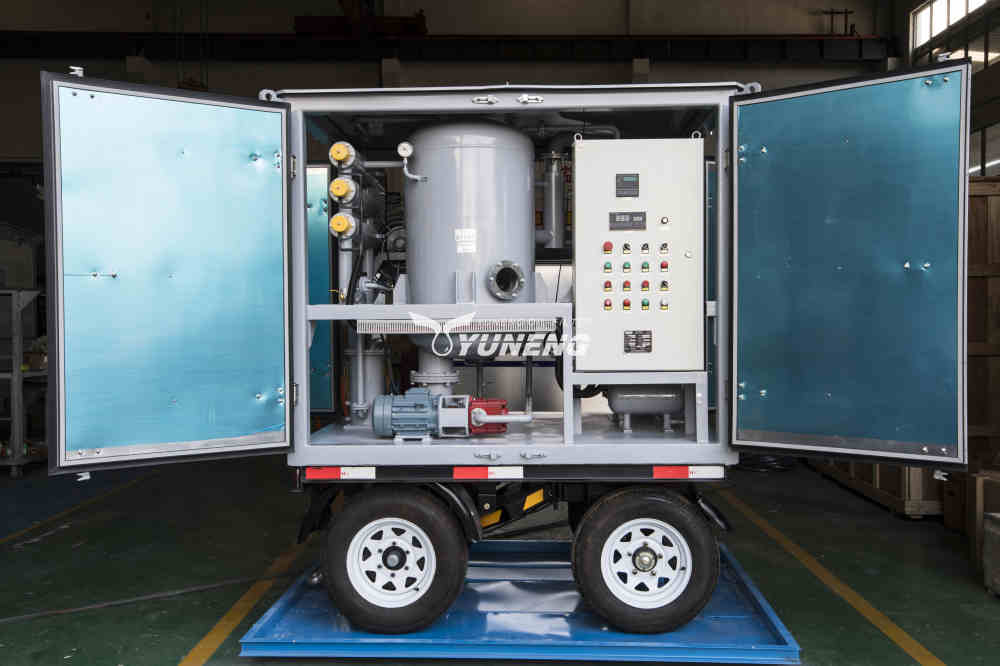
7. Why do you need a transformer oil purifier?
If we choose to filter the transformer oil to extend the service life of the transformer oil so as to maintain the normal and safe operation of the transformer. Therefore, transformer oil needs to have the following basic qualities:
1. The oil should not contain dirt, moisture, metal ion fibers, etc.;
2. It should have stable oxidation resistance under different operating temperatures;
3. It should not be corrosive;
4. It is not suitable to dissolve the structural material of the transformer.
By using the transformer oil purifier, the particles, moisture, gas, acid, and other substances in the transformer oil can be removed without destroying the original additives in the oil and maintaining its original performance.
8. Advantages of YUNENG oil purifier
Advantages of our transformer oil purifiers:
- Improve the insulating properties of used transformer oil
- Effectively reduce transformer failure frequency
- Reduce unnecessary transformer oil consumption
- Effectively extend the life of transformers
For more knowledge and quotations about transformer oil and transformer oil purifier, and transformer oil regeneration machine, please get in touch with YUNENG.

